Heading to the Pantheon in Rome and want to know more about the structure? It’s almost 2,000 years old, so it has a lot of accumulated stories, folklore, and even dead bodies! In this article, find out all about what to see at the Pantheon and why it is important from a local guide of Rome.
Pro Tip: It’s easier to organize your trip when you have all your resources in one place. Create a browser folder and bookmark this post. Also, check out our guide to Rome for more planning resources, our top Rome tours for a memorable trip, and the top things to do near the Pantheon.
Editors Note: From July 3, 2023, a paid ticket will be required to visit the Pantheon in Rome. Tickets cost €5 for adults and free for children. At the time of writing, the tickets can only be purchased on-site but will be available online by the end of the year. (Updated 7 Jul 2023)
Discover the Stories and Symbolism of Rome’s Pantheon
The Pantheon is a long-surviving architectural wonder in Rome with an impressive history and even some mystery. Even today, we are not certain who the architect of the Pantheon was. In this article, find out more about this ancient structure. Want to see the Pantheon with an expert guide? Join us on our skip-the-line Pantheon guided tour.
Not ready to book a tour? See if Rome tours are worth it.
The Meaning of the Word “Pantheon”
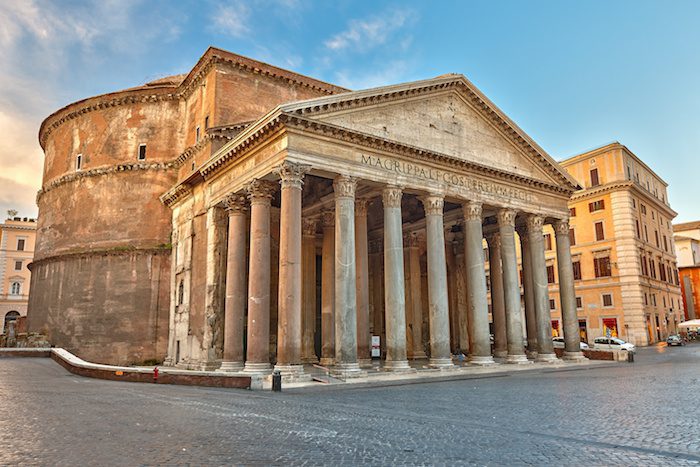
The word “pantheon” translates to all-worship or all-gods depending on how you look at it. Contrary to what many have written on the internet, the use of the building was not to worship all pagan gods.
Pagan gods didn’t appreciate sharing a temple with other gods. Some exceptions are for gods conjoined in their purposes like Castor and Pollux. Also, a deified couple like Antonius Pius and Faustina his wife share a temple. But in general, the Romans built temples dedicated to a single deity.
What the Romans used the Pantheon for is undocumented at best, making any reason I provide mostly assumption or guesswork. A strong theory from the Professor of Archeology, Amanda Claridge, is that the Pantheon existed for the worship of emperors yet to be deified.
It is no mystery that Romans didn’t like to worship emperors as gods until after their death. Claridge states in her Rome Archeological Guide, “the Pantheon provided a setting–not a temple in the conventional sense–in which the living emperor would appear in the company of the gods (including his own deified predecessors).
The Porch of the Pantheon
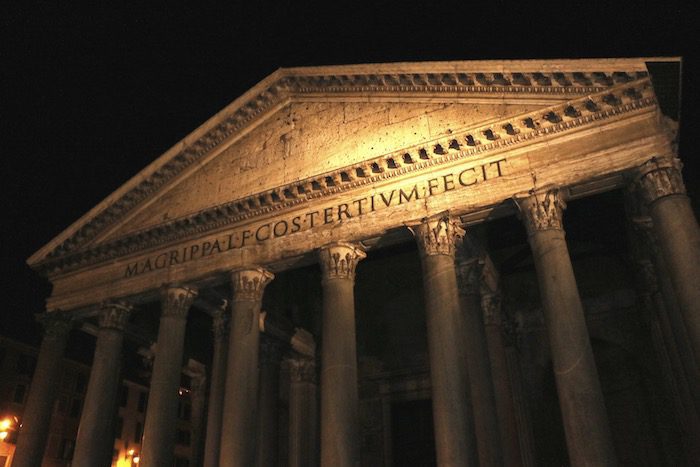
The inscription on the front reads: M AGRIPPA L. F. COS TERTIUM FECIT or “Marcus Agrippa, Son of Lucius, Thrice Consul, Made This.”There’s also another inscription that is extremely difficult to say that reads: pantheum vetustate corruptum cum omni cultu restituerunt or “with every refinement they restored the Pantheum, worn by age.” This was likely a superficial upgrade that would be non-structural.
There are two massive statues of Caesar Augustus and Marcus Agrippa on the front porch in the two alcoves. There are also statues of Venus and Mars. Julius Caesar, the father of Augustus, claimed to have descended from Venus.
The Pantheon porch is significantly different from the inner drum. It is quite literally the square peg and round hole dilemma. Many speculate as to why the building’s porch design does not match the width of the drum.
If you look directly at the structure, you can see the drum behind the porch which, for a lack of better words, makes the exterior look ugly. Some think this was due to a shortage of materials during construction or even a shipwreck that caused the loss of some columns from Egypt.
Egyptian Marble
It’s still a classical and monumental entrance. The support columns are monolithic shafts of Egyptian granite that sit on a base of white Pentelic marble. The exterior of the building would also have been completely clad with marble—the Romans would not have designed the structure with a brick exterior.
The triangular facade shows many marks that lead us to believe there must have been a frieze on the front. Imagine a massive Eagle in a victorious wreath—this was the symbol of Rome and Jupiter. You’ll see small holes that would have adjoined the frieze to the facade.
Also, notice there are four pink Aswan marble columns in the middle of the porch. These columns were added in the 17th century after some damage and are not original to the building.
The bronze doors, although ancient for us, are not original to the building. They were likely added in the 15th century when Rome was coming out of the darkness of the Middle Ages.
Popular Rome Tours
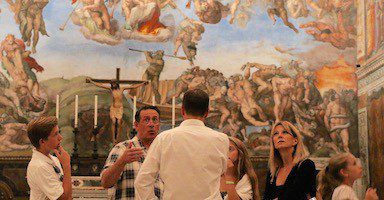
Best Seller
Privileged Entrance Vatican Tour with Sistine Chapel
This our most popular and longest-running Vatican tour to date. You’ll enter the Vatican Museums an hour before the public opening and see the breathtaking Sistine Chapel. Admissions are included and our English-speaking guides do a wonderful job bringing the museums to life!
See Prices
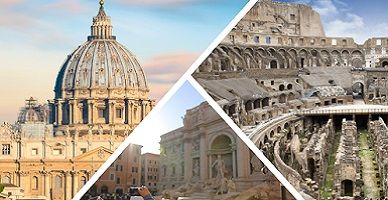
Customer Favorite
Rome in a Day Tour with Vatican, Sistine Chapel, Colosseum, and More!
Looking to get much of your sightseeing done in one day? This tour enters the Vatican an hour before opening and visits the Colosseum along with other sites like the Pantheon, Piazza Navona, and Trevi Fountain. All admissions and transportation are included as well as a licensed, English-speaking guide!
See Prices
Not ready to book a tour? Check out our best Rome tours to take and why.
The Tomb of Vittorio Emanuele (Victor Emmanuel)
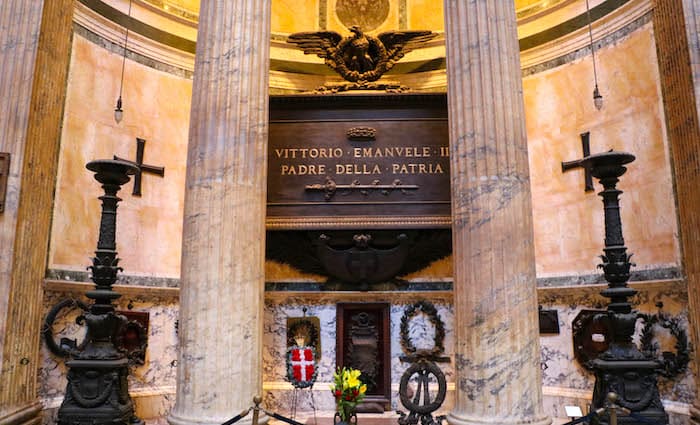
Vittorio Emmanuelle was a Sardinian King who successfully unified all of the sub-kingdoms of Italy to form one great nation between 1861 and 1871. He was from the Casa Savoia, which was a great noble family established in A.D. 1003. Their family still has successors today, although their titles are not recognized.
Emmanuel’s army, led by the great Giuseppe Garibaldi, brought the peninsula under the rule of one monarch. Some sub-kingdoms joined peacefully, while others by joined by force.
The final stop was the battle of Castelfidardo, which is when Garibaldi fought and was victorious over the papal forces. The idea of the Catholic church controlling armies is extremely foreign to us today.
Victor Emmanuel II died in 1878 and was buried in the Pantheon. His tomb reads Padre della Patria, which translates to the “Father of the Fatherland.” The fact that he was allowed to be buried here is a mystery.
Pope Pius IX refused to meet with Emmanuel after he overtook Rome and never acknowledged his reign. Then, he allowed him to be buried inside the Pantheon, a Catholic Church. Umberto I, the second and last King of Italy and also a Savoia, is buried in the same tomb.
Famous Painter Raphael’s Tomb
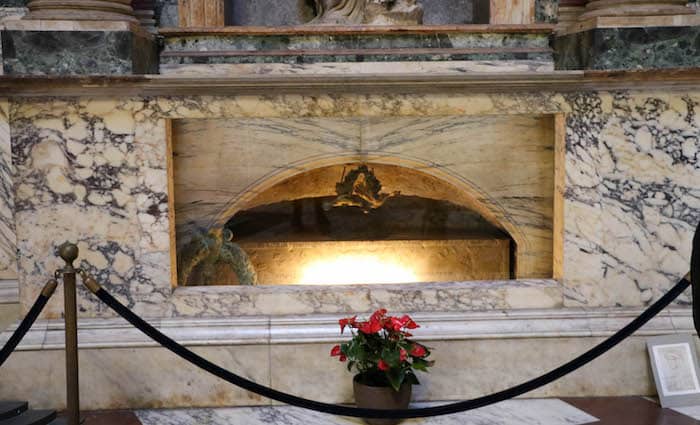
Raphael’s tomb is on the back left-hand side of the structure. He’s buried next to his fiancée Maria Bibbiena, which was not by his design. He was madly in love with Margherita Lute—a baker’s daughter and the subject of many of his works of art, including La Fornarina (Palazzo Barberini), which translates literally to the baker’s daughter.
Raphael, who lived from 1483 to 1520 and may have died on his birthday, is located under a statue of Mary holding baby Jesus to her left, which was done by an artist named Lorenzetto.
His tomb reads ILLE HIC EST RAFFAEL, TIMUIT QUO SOSPITE VINCI, RERUM MAGNA PARENS ET MORIENTE MORI. Translated by Alexander Pope, it reads, “Living, great nature feared he might outvie Her works; and, dying, fears herself may die.”
The Dome and the Oculus
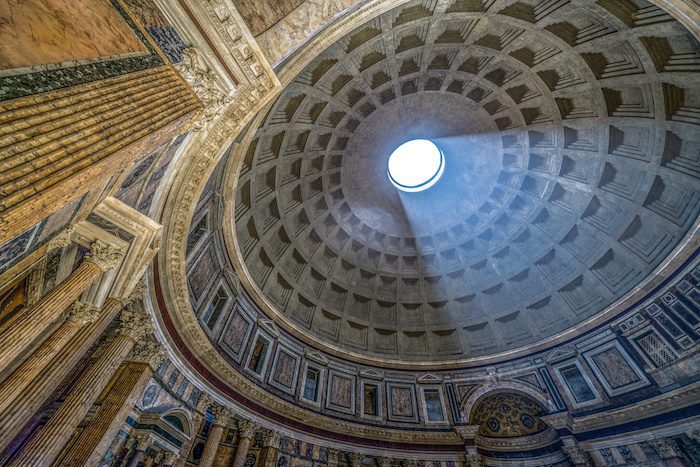
Once you walk inside, your eyes will be drawn to the dome above you. Many people stop in the doorway causing traffic jams and we can’t blame them. That’s exactly the effect the architect would have longed for.
The building is 145 feet (44.4 meters) tall by 145 feet (44.4 meters) wide and built completely from stone, brick, and concrete. The dome is made entirely out of concrete with five rows of 28 coffers that decrease in size as you get closer to the oculus. The oculus is completely open.
Rain and other elements do get inside the structure when the doors are closed. You’ll see the floor slopes down into the center and drains in place to allow water to leave the structure. There’s a bronze ring on the interior of the oculus and there would likely have been decorative bronze fixtures in all of the 140 coffers.
The Dome
The dome is a perfect hemisphere, so you’d be able to fit a sphere inside the structure with a diameter of 44.4 meters. It would touch the ceiling, floor, and walls—the building is perfect.
Thus, its construction is a mystery. Some believe a complex scaffolding was used to lay the concrete, while others believe the entire building was filled with sand from Ostia. Today, all you can do is enjoy it.
If you’re a history nerd like us, you’ll love our Rome in a Day tour, which explores the Pantheon and other top Rome sites. You could just read more about the Pantheon’s history, but nothing beats seeing it in person with a passionate local guide who loves history as much as you!
Not ready to book a tour? See if Rome Tours are worth it.

Where To Stay in Rome
Rome has a rich cultural history and many iconic landmarks to explore. Plan where to stay in the magnificent Eternal City in the best neighborhoods.

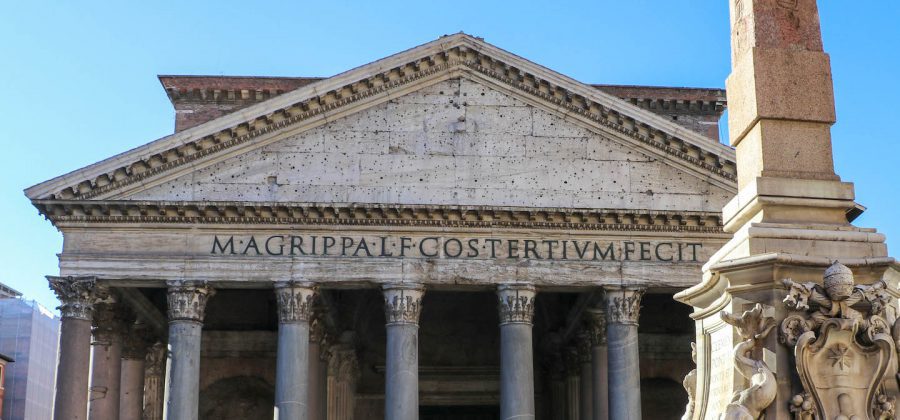
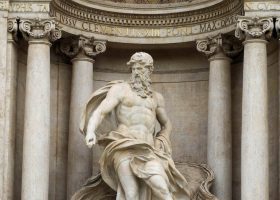
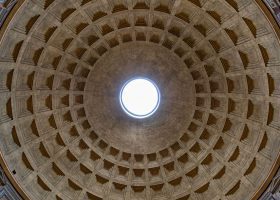
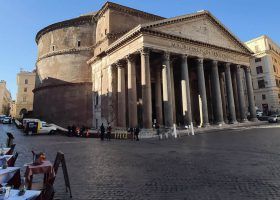
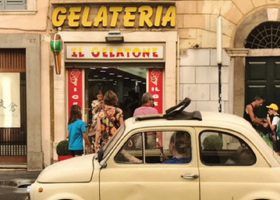
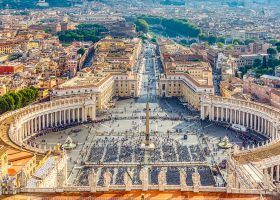
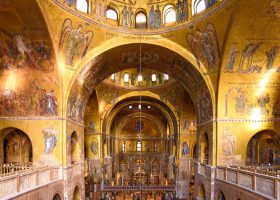
Leave a Comment